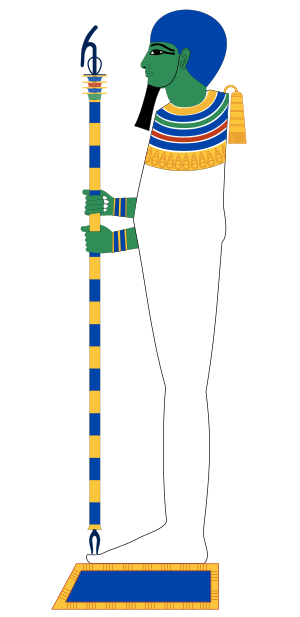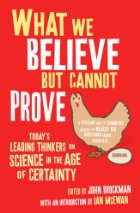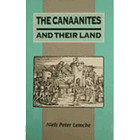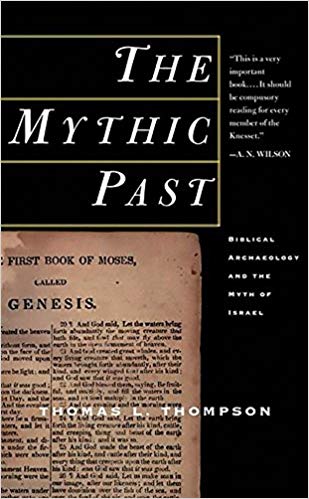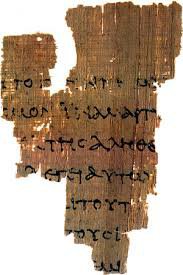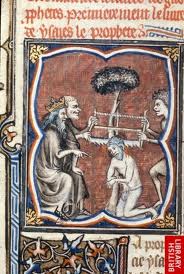
(belatedly — about 50 mins after original posting — added quotation from ‘The Origin of the Samaritans’ concerning the date of Asc. Isa.)
Coming hard on the heels of Dr McGrath’s public display of professional incompetence over his failure to understand the elementary principles of the Documentary Hypothesis, this is a double embarrassment for the professor. He demonstrates total confusion about the date of the composition of the various parts of the Ascension of Isaiah and in the end resorts entirely to the one passage many commentators are agreed is a late Christian interpolation and that has no relevance at all as a rebuttal to Earl Doherty’s arguments about the earlier portions of the text. For good measure he concludes with a swipe at Doherty’s use of the word “midrash” (yes, again) despite the fact that his use is in complete accord with what Jewish scholars of midrash themselves, not to mention a raft of his own New Testament colleagues, say about the Gospels.
Dr McGrath misleadingly titles his post Review of Earl Doherty’s Jesus: Neither God Nor Man chapter 10 part two. It is not a review of the second part of the chapter by any means, and Dr McGrath effectively admits this. He left off the review of the first part of this chapter after covering the first 12 pages. But now he skips across the next ten pages to focus on the last 7.
I’ve finally found some time to post my second blog entry about chapter 10 of Earl Doherty’s book Jesus: Neither God Nor Man – The Case for a Mythical Jesus. Here’s a link to my first post about this chapter. Ironically, even though I have written far more already on the first 1/6 of the book than one would ever find written about an entire book in a printed review, some mythicists have still complained that there are details in the book that I have not addressed.
To paraphrase an expression Dr McGrath has himself used often enough himself: Just writing lots of tirades against a book chapter by chapter does not mean that one has addressed anything more than one or two points per chapter. I have in past posts demonstrated with a comparison of Dr McGrath’s “reviews” and Doherty’s own words that McGrath has chosen to entirely overlook the central arguments and key points of chapters, and even baldly claim that Doherty does not say or reference things that he most certainly does say and reference. The fact is, the complaints against Dr McGrath’s reviews have focussed on the intellectual dishonesty that runs through them all in that they regularly accuse Doherty of not saying or addressing things he clearly does say and address, and of creating completely misleading ideas of Doherty’s arguments by omitting entire arguments that belie McGrath’s false allegations.
Since those complaints are a smokescreen trying to distract from the fact that the book’s shortcomings are so bad that they undermine anything positive that could be said about the book, presumably there is no point in trying any longer to be as comprehensive as possible.
One has to ask for whose benefit Dr McGrath has been writing these reviews. He says here the complaints “of a few mythicists” have led him to change his approach. Was he really doing these reviews all along primarily for the benefit “of a few mythicists”? I doubt it. I suspect McGrath has finally tired of attempting to maintain the appearance of comprehensive chapter by chapter reviews — efforts that were regularly rewarded with prompt exposures of his incompetence (one dare not suggest dishonesty) with each review — and now is going to select bits here and there in the book he feels he can use as a springboard to attack mythicism.
In other words, if readers of his reviews were given a completely false impression of Doherty’s book till now, from now on they will not be given any overview of the chapters at all.
I don’t know how such an exercise can possibly be called “a review”.
What good points there have been in the book thus far have typically been things that one can find in other books which consistently use a scholarly approach. And so from this point onward readers of this blog can expect me to focus entirely on the book’s many shortcomings, and can look elsewhere for other information.
Dr McGrath appears here to be saying that there is absolutely nothing Doherty has written that is “good” that is not found in other authors. Everything original Doherty has written is “bad”.
I have always thought it a truism that when you start to find nothing good or nothing bad in another then that is a sure warning signal that you are letting prejudice dictate your outlook. One is reminded of book-burning rationales. Anything bad in the book deserves to be burnt; anything good is redundant so the book should be burnt anyway.
This chapter at long last brings into the foreground something that is central to Doherty’s book: the question of where Jesus was believed to have been crucified (on earth vs. in a celestial realm). Also central to Doherty’s argument is a work known as The Ascension of Isaiah, which some have regarded as originally having been a Jewish text which Christian redactors made additions and changes to in order to adapt it to a Christian viewpoint, while others would say that the work is better viewed as resulting from the combination of Jewish and Christian works originally composed separately.
Dr McGrath appears to be confused here. There is no either-or of which I am aware. Scholars are agreed that the first 5 chapters are primarily an early Jewish text; subsequently Christian texts were written of the Vision and later still other Christians combined these and interpolated additional Christian passages into both halves.
That is, the first 5 chapters are virtually unanimously believed to be a first century Jewish text about the martyrdom of Isaiah. The remaining chapters are a compilation of later Christian additions. They speak mainly of the Vision of Isaiah. When these Christian and Jewish texts appear to have been combined into a single work a Christian redactor interpolated a sprinkling of verses throughout the Jewish section and added a large section, chapters 11:2-22, to the earlier Christian account of Isaiah’s vision. That is a very simplified but essentially correct overview. McGrath himself later says the textual history is very complex, but actually Doherty does address and explain the complexity very well — a pity Dr McGrath did not take the time to learn from him.
It is easy to overlook Dr McGrath’s apparent confusion at this stage of the post but later on we will see that it should be taken as a warning indicator that there is much more to come. Dr McGrath clearly has never seriously studied the Asc. Isa. before and there is much evidence he is struggling to make a coherent argument. (It took me quite some time and re-reading many commentaries before I could be sure I could grasp the many references to the various manuscripts in the different languages, of the Asc. Isa., but the basics are not difficult to follow.) In the end Dr McGrath will rely for his own “rebuttal” of Doherty entirely on the one passage all scholars declare to be a very late second century forgery that is completely irrelevant to Earl Doherty’s argument.
He continues: Continue reading “Response #1 to the good doctor’s “review” (sic) of a bit of Earl Doherty’s chapter ten”

